Jedi Knight series retrospective: Inside the development of some of the best Star Wars games ever made
With Star Wars Jedi: Fallen Order out in the wild, Retro Gamer finds out how the very best Star Wars games were made
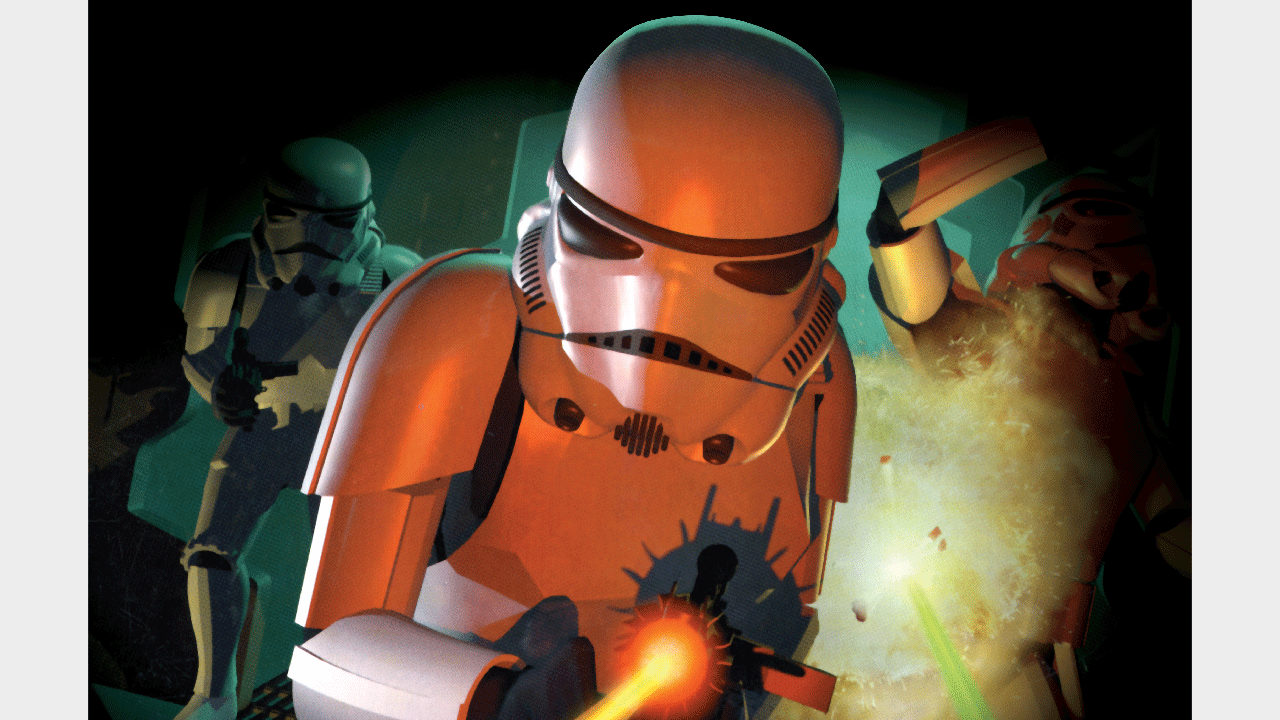
If ever a series shouldn't have been cast aside, it was that comprising of the Dark Forces and Jedi Knights games. Not one of its five entries: Dark Forces (1995), Dark Forces 2: Jedi Knight (1997), Dark Forces 2: Jedi Knight – Mysteries Of The Sith (1998), Jedi Knight II: Jedi Outcast (2002), and Jedi Knight: Jedi Academy (2003) – were in any way bad, each of them receiving critical acclaim on release and all of them still being held up as great examples of how to do good by a licensed franchise. And yet, we've still not received a new game in the series.
But why? At the core, these were all fairly straightforward shooters – the original Star Wars: Dark Forces was essentially a Doom clone. It was a straight-up shooter with a pistol, a rapid-fire weapon, explosives, and all that. It also had puzzle-solving elements. But two things helped the game rise above: smart design, and Star Wars.
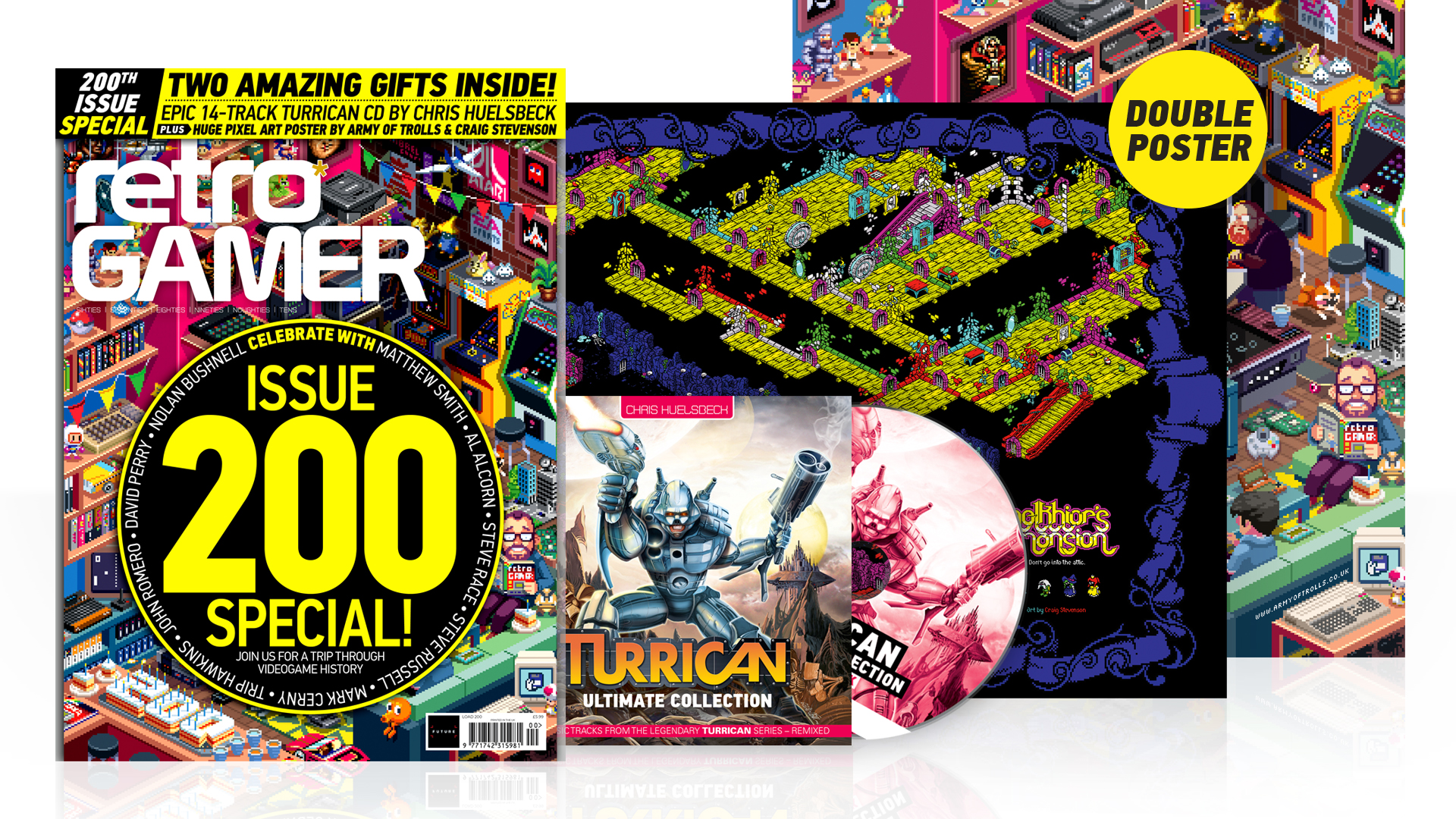
This feature first appeared in Retro Gamer magazine. If you want in-depth features on classic games delivered straight to your door (or your inbox), then you should subscribe to Retro Gamer.
Everyone wanted to play a Star Wars game in the style of Doom – even those who made Doom, as Matthew Tateishi, a level designer on both Dark Forces and Jedi Knight, remembered: "I remember the team getting an email from John Romero after he had played through Dark Forces – he said something like ‘now I know how people felt when they played Doom for the first time.'"
That Star Wars element meant more benefits than some might have hoped for – an established universe with reams of backstory and decades of development is a rich vein to mine, creatively speaking. Jarrod Showers had finished work on Soldier Of Fortune 2 – now tasked with the role of lead animator on Jedi Knight: Jedi Academy, he found that the real world was somewhat lacking compared to that of a galaxy far, far away: "While modelling the Rancor, I remember thinking there was more reference stuff to work off of in Star Wars than there was for the real world guns in
Soldier Of Fortune!"
It was a great playground to work within, Jarrod went on to say, though he did point out some elements of the universe were off-limits, like using Han Solo in any way, shape or form. "But then there were times we could bring in iconic characters like Luke Skywalker and Boba Fett," he added, "That made it feel like we were actually contributing to the universe we all loved."
Made by devout superfans
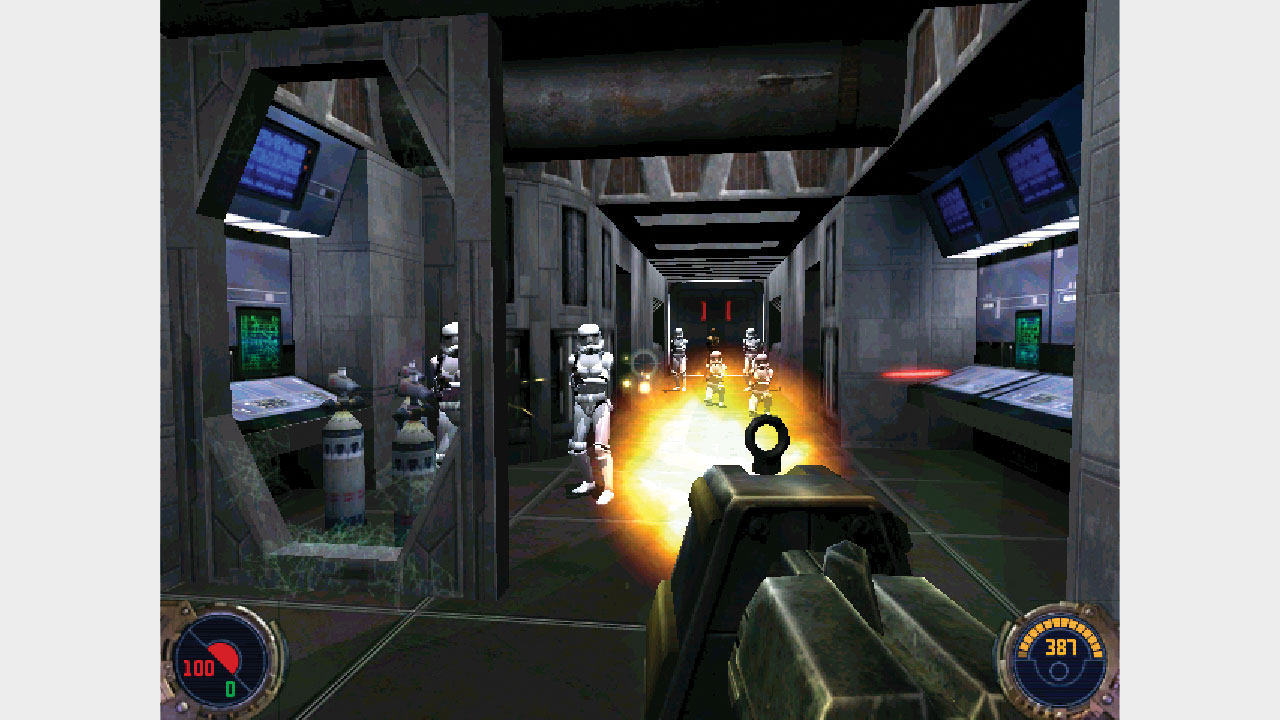
The love of the universe was something that would be expected of many who worked on the Dark Forces/Jedi Knight games. Kevin Schmitt, now senior designer at 343 Industries, worked on Jedi Knight: Mysteries Of The Sith and Jedi Knight II: Jedi Outcast. He was also a devout superfan of the Star Wars franchise. "The three original level designers on Mysteries Of The Sith got a little worried when I pulled up with my personalized plates (MTFBEWY: May The Force BE With You)... But I finally had a venue for all the Star Wars knowledge I had stored up for so many years."
While Disney might have nuked all of the expanded universe mythology, it doesn’t change the fact that – back in the day – these were people, often Star War fans, who were working on, adding to and enriching the universe they cared deeply about. "We would often spread that resource material all over the floor and look for ideas and ways to tie things into the existing Star Wars universe," Kevin continued, "Since I had such a passion for it, I thought I owed it to the franchise to stay as true to the source material as possible. I was in heaven."
Sign up to the GamesRadar+ Newsletter
Weekly digests, tales from the communities you love, and more
Playing with an entire universe of someone else's creation, you might expect the man himself – George Lucas – to have some involvement in the Dark Forces/Jedi Knight games. Not so, said Kevin – in fact, George Lucas wasn’t really involved with production at all back then. "There’s a funny anecdote Daron Stinnett, project director of Dark Forces, told me," Kevin recalled, "The local news wanted to get a story on George and Dark Forces. He sat down and played it while they filmed it. When the interview was over, he leaned over to Daron and said 'This is really violent!' From then on I don’t think he was too interested in [Star Wars] games until around The Force Unleashed."
While the man who put his name to the studio wasn’t directly involved in the various productions, it didn’t mean it was all smooth sailing. Each of the five Dark Forces/Jedi Knight titles carried a fair bit of baggage with it, thanks in no small part to licensing. While the games were based on Star Wars and being made by – or in close conjunction with – Lucas's own company, there were still restrictions, hoops to be jumped through and arguments to be had.
Be nice to Jar-Jar
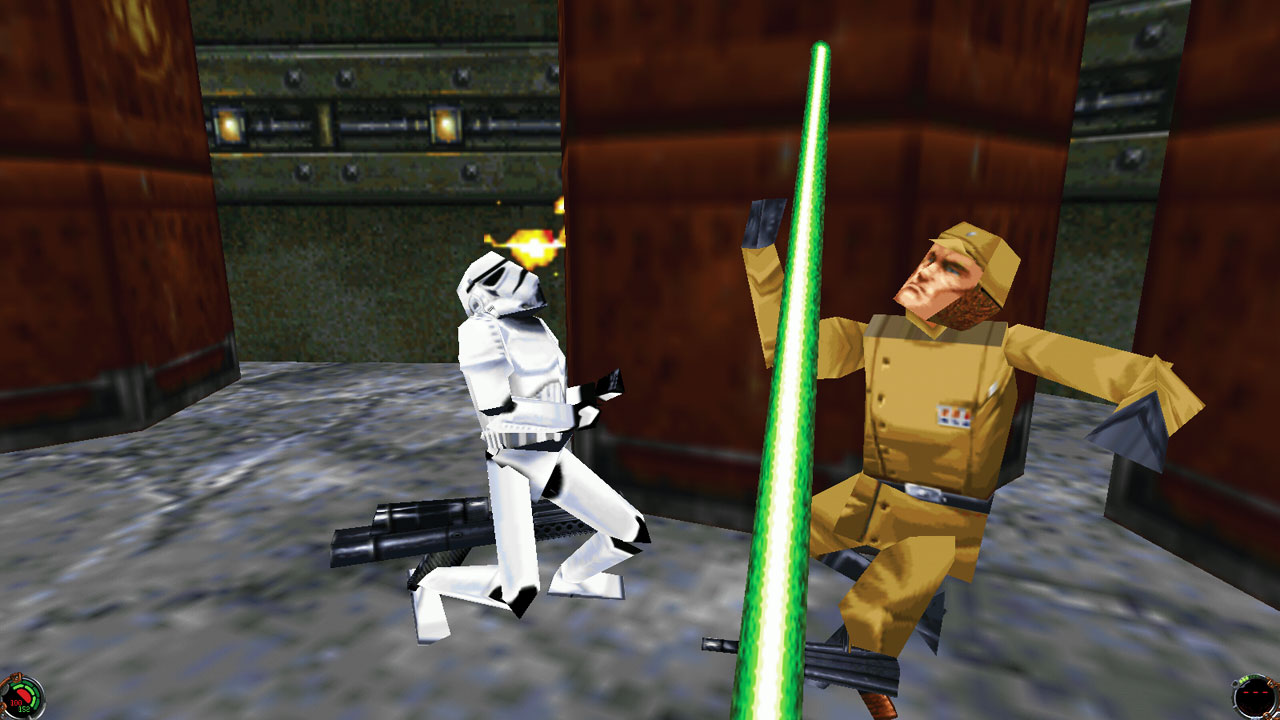
Kevin pointed out two of the less impactful restrictions placed on development: "We did have a longstanding 'no mistreatment of Ewok' policy in place (which we broke in Outlaws) and there was later a 'no mistreatment of Jar-Jar' policy." Yet sometimes the policies weren’t as clear cut as the creators of the games initially thought. "I think we talked about Lando Calrissian as a joke at first," Kevin continued, "Like we would only do it if we could get Billy Dee Williams. Well, somebody talked to somebody and the next thing we knew he was on board so we went ahead and made him a key plot point."
But it wasn’t always as easy as getting Lando on board, with restrictions and rules in place and a constant back and forth between the development team and licensing. Stephen Shaw, project leader and designer on Mysteries Of The Sith explained one particular hurdle that has stuck with him: "The largest restriction that was put on us was that we weren’t able to create any new Sith lords for our protagonist to battle. This made it a challenge to figure out how to have lightsaber battles as a game element."
But, as Kevin pointed out, the team found a way around this particular roadblock: "We had originally proposed some sort of Sith Apprentice, a non-Jedi wielding a lightsaber. Licensing came back and said 'No, only Jedi can wield sabers'," he said, "We went back to the drawing board and spent a few days trying to work around this limitation. Nothing was coming up. Then we got this crazy idea… It seemed as though Licensing rejected at least one thing from each of our submissions, almost as if they had to veto at least one thing from our designs to validate their existence."
"We figured if we put something in our design proposal so out-of-this-world crazy, and then slipped in the real idea we wanted, they would veto the crazy thing and let our real idea through. I can’t remember what it was that we slipped in for them to veto, but if they let Sith undead in, it must have been crazy. This became our MO from there on out when dealing with Licensing."
An iron grip
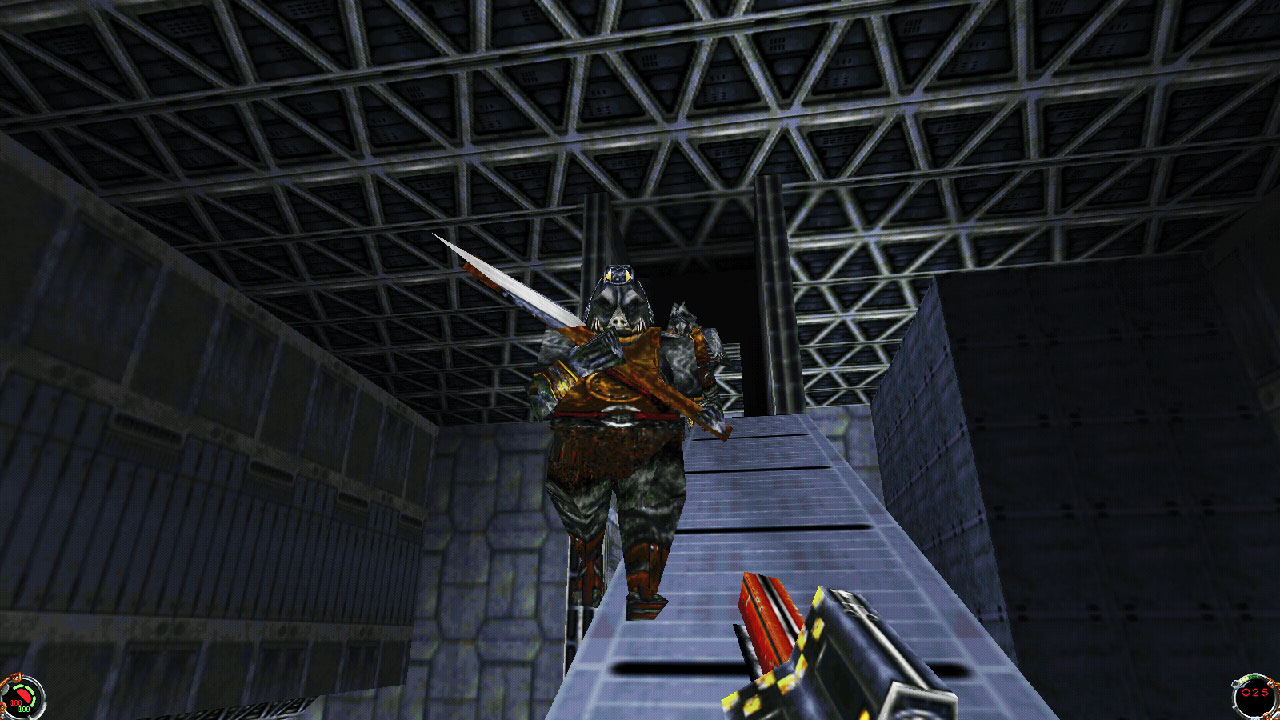
This was an iron grip holding on to the Star Wars licence – and with good cause. As one developer, who asked to remain anonymous, told us, the control was exercised because these were games recognised for a certain earning potential: "The development of the game was supposed to be 100% top-secret," they said, "It was internally announced in a Raven company meeting when a mysterious towel-shrouded head was produced… underneath which was a bust of Darth Vader. The game also got an alias, CHC, to be used in any emails in case security was breached. CHC stood for 'Cold Hard Cash'."
This ethos extended beyond just the Dark Forces and Jedi Knight series too, with Yves Borckmans, programmer on Dark Forces 2: Jedi Knight and Mysteries Of The Sith, explaining it was part of the reason he eventually left the studio. "When Episode I was filming and we started working on games based on it the paranoia on leaks became extreme," he explained, "It became pretty uncomfortable to work there. All offices had their windows covered with opaque papers, you had to call security to go talk to some colleagues. This is about when I left, and I was happy to, it was a bad atmosphere in the name of secrecy."
But all the back-and-forth discussions, micromanagement and confusing licensing decisions in the world could not stop the core teams on each game from doing what they could do best: make some damn fine games. There is something about the Jedi Knight games (less so Dark Forces, owing to the technical limitations) that makes them feel fresh even today: clever design. Design that uses 3D space to its full advantage and design that does not just corral a player down a straightforward corridor.
You can get lost in Jedi Knight, you can become confused by a puzzle in Mysteries Of The Sith, you can get shot from someone 50 metres almost directly above you in Jedi Outcast, and you can have wonderful, flowing, freeform lightsaber battles in Jedi Academy. All of them have elements of design players would kill to see in modern shooters, but for some reason they’re largely left on the junk pile.
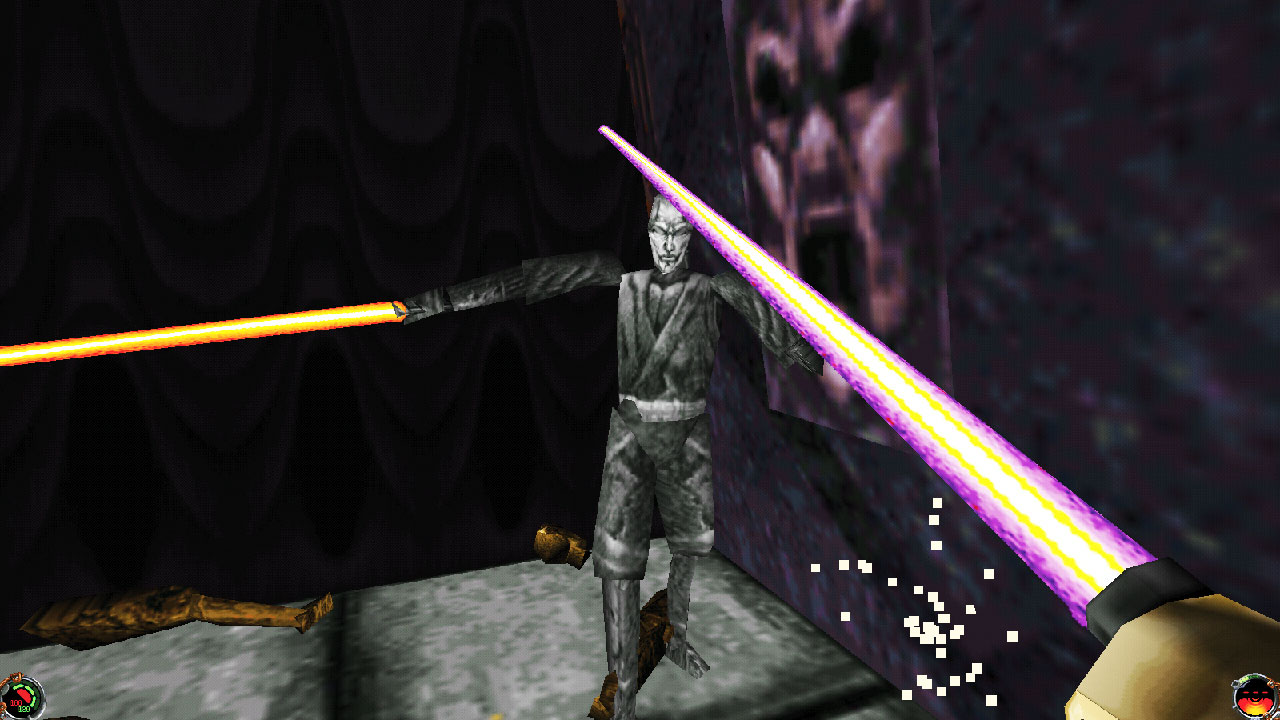
"While we had a limited budget and production schedule, the team rallied to see how many characters we could put into the game"
Then, of course, the design comes back to the Star Wars factor: "Some great examples of this are on level one of Mysteries Of The Sith," Stephen explains, "I remember describing to Kevin Schmitt wanting to see Hoth-like scenes where the wall explodes and Stormtroopers flood in and get in a fire fight with rebels and you have to run through it to accomplish your objectives.
"It was also somewhat of a funny challenge for Richard Fife who worked on the AI. Most of the AI logic and data structures had been written for Jedi Knight to focus on and interact with the player and it was really difficult to alter the AI’s (Stormtroopers) to focus on NPC’s (Rebels). Every now and then you could still see brief moments where the Stormtrooper logic tries to focus on the player before Richard's logic would smack them back into shape and they’d turn back to the NPC's."
This culture of building on what already existed didn’t stop at MOTS, either, as our anonymous developer pointed out: "The original Raven Jedi Knight prototype was made in a short month, using the Star Trek Voyager: Elite Force codebase as a starting point. Early on, someone painted a Klingon texture white as a sub for Stormtroopers."
Even working on a project as huge as one for Star Wars, there were budget – and time – constraints to take heed of. But as Stephen explained, this need for thriftiness just led to creative solutions: "While we had a limited budget and production schedule, the team rallied to see how many characters we could put into the game," he said, "Clint Young and Chris Hockabout were fiends at modifying models and painting them with new textures and suddenly we would have a Hammerhead, a Trandoshan, or a Weequay that we could have to spice up environment. I also was able to grab one of the models created for the X-Wing series and convert them into a format that Clint could then clean up and import into the game, giving us even more to add to the environment. "This gave us the ability to not only have them in Katrassi, but also to have the space battles between capital ships going on outside the windows on the Talon Karrde / Holocron / Pirate Raiders levels, once again attempting to give the player the feeling that they were in the middle of one of the space battles from the movies."
Running wild
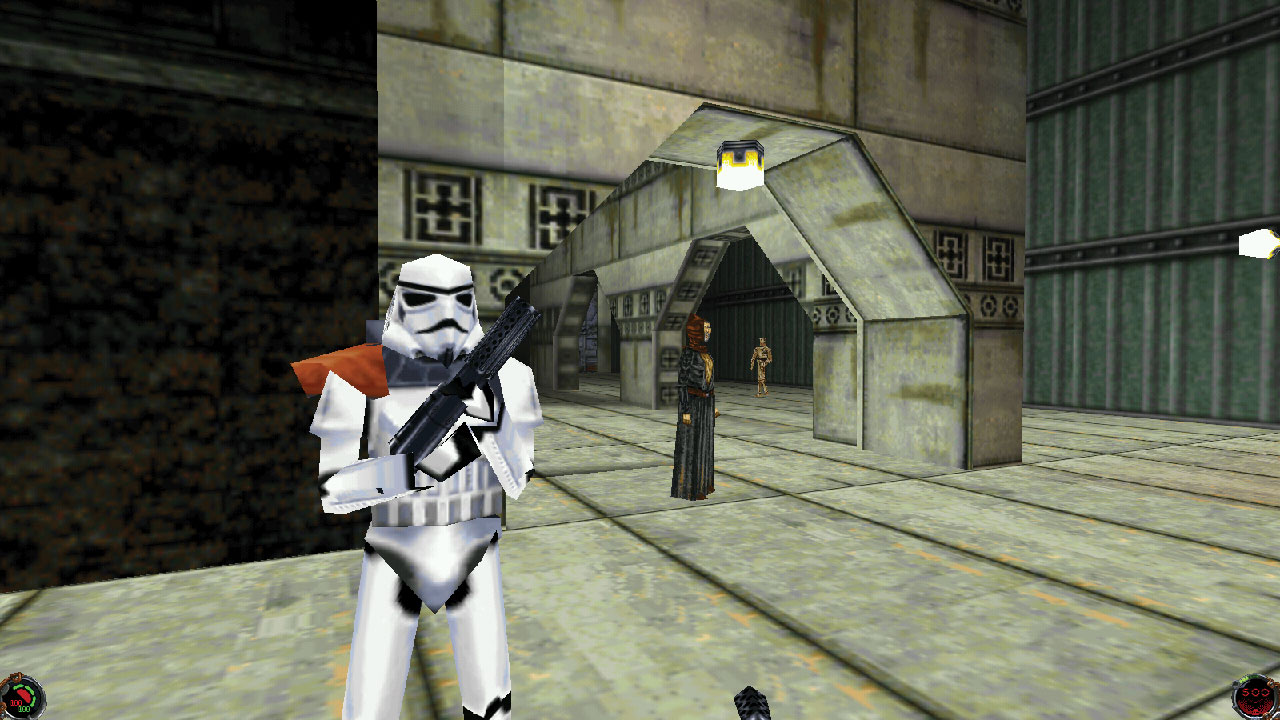
One area where creative design could run wild, though, was in the use of Force powers. Introduced in Dark Forces 2, players were suddenly able to run, jump, pull, push, grip, and electrocute with the best (and worst) of them. Far from just being a mere superpower button, though, these Force powers meant that the games could be designed in a different manner to other, traditional first-person shooters.
"Force powers opened up a whole new avenue," Kevin said, "We could place things in hard to reach places, add new dynamics to a boss battle and more. It added great campaign replay value; choosing a path and picking your powers, not to mention adding some new and sneaky dynamics to multiplayer."
The multiplayer, of course, was – and still is – a huge battleground for fans of the series. Those lightsaber duels in Jedi Outcast and Jedi Academy have yet to be bettered, and at least one of the finest examples of games writing out there has been based directly on one of these very duels. The admiration for them is shared by the people who actually had a hand in making them, too. "I remember vividly some very intense one on one lightsaber matches, staring my opponent down, talking some serious trash talk, and then charging them with my fingers on the Force Choke button," Kevin tells us.
"We had some epic battles in production. Jedi Knight II: Jedi Outcast’s multiplayer even took that to new heights. That is still some of the most intense multiplayer combat I have ever experienced. There is just something more personal about fighting up close with a lightsaber."
The name is Kyle
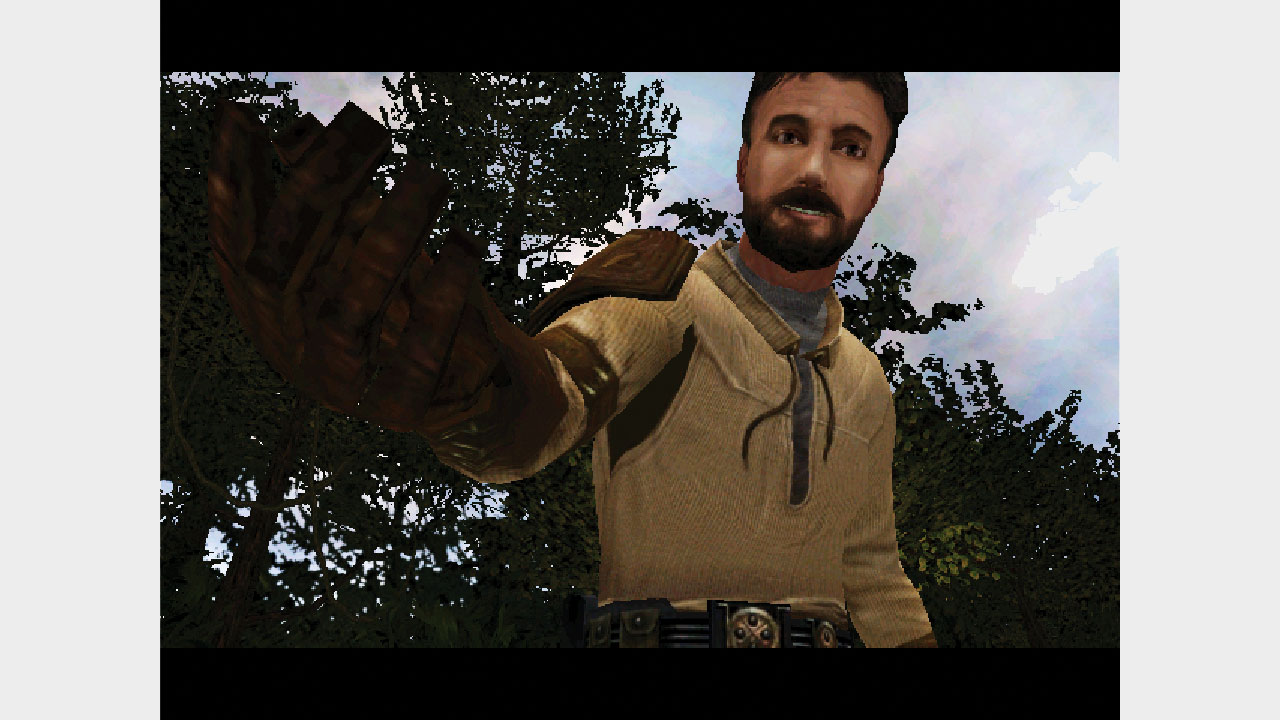
Speaking of the personal element, players of the Dark Forces/Jedi Knight series have something of a personal connection thanks to the one man who appears in all of the games – Kyle Katarn. Created for the original Dark Forces, Katarn went on to appear in comics, novels, even action figure form – and he's a popular character in the Star Wars universe. Not bad for a first-person vessel for the player.
"I think Kyle Katarn was mostly designed to mirror the 'become a Jedi' hero journey of Luke but without using any of the canon characters in a game," Yves explained, "I think the overarching goal of all the games was to immerse the player in the Star Wars universe as the hero of the story."
But with that heroism comes temptation – both of the light side, and of allowing the player to dabble in the dark side. Dark Forces 2 allowed the player to choose their path, light or dark, with a set of powers accompanying their choices (you don’t see Obi Wan Kenobi doing a Force Choke, for example). But that choice meant continuity was an issue in the following games, and this element of choice was dropped for a Katarn who was... somewhat torn.
"We wanted to avoid the same issue we had with Jedi Knight when the player chose their path," Kevin explained, "Since we had Kyle go to the dark side in Mysteries Of The Sith, we decided he would therefore have all powers available to him. I think the players liked this as well, they could choose their favourite abilities without actually locking into a side.”
Iconic moments
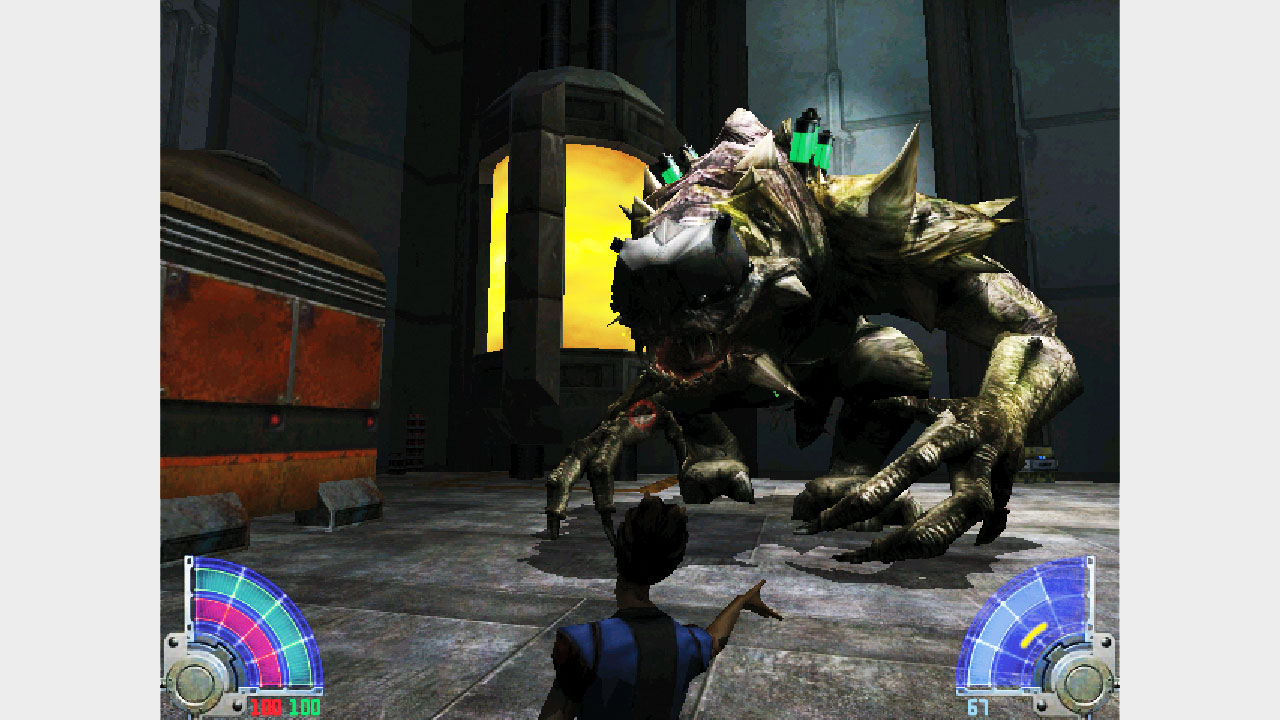
With all the juggling of elements - a game design that had to appeal and be familiar to players, an established universe that was to be handled with due care, attention and with all the problems that come with moneymaking licences, a character who had to be everything to everyone while at the same time fitting in with all manner of rules set up by a man who wasn’t even working on the game – even with all of this working against them, the Dark Forces and Jedi Knight games worked. They worked well. And they're remembered fondly.
"It comes up every once in a while and I’m definitely proud to have worked on it," Matthew tells us. "I think there are definitely some iconic moments in those first two games I worked on – the one that probably comes up most often is the falling ship level designed by Jacob Stephens. It was a good example of the right people coming together at the right time on the right project."
Kevin feels similarly, though he admitted he doesn’t hear the games referenced directly so much as it is a feeling from those he encounters. "I think we had a greater impact inside the industry," he said, "Many – and I mean many – fellow developers I talk to reference playing the series. Much like the Star Wars films got people into making movies, the Dark Forces/Jedi Knight series got them into making games."
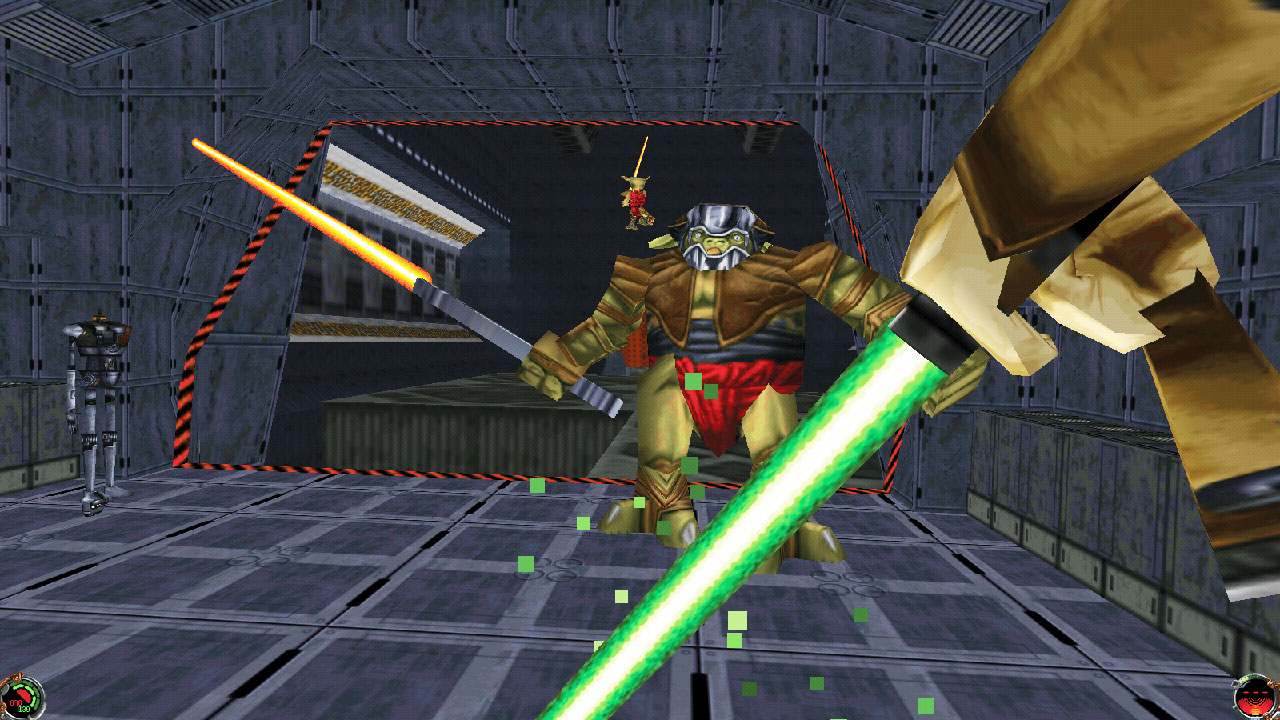
"It was one of the first environments that made people feel vertigo in a game; it was so expansive and complex"
“One of the most common comments I hear among artists is the amazing look at feel of Nar Shaddaa in the series. It was one of the first environments that made people feel vertigo in a game; it was so expansive and complex."
Even those with memories of a nine-month 'brutal' crunch period on Dark Forces 2, like Yves, still have a sincere soft spot for the franchise. "Everyone kept insane hours,” he explained. "My typical day would be 9-10am til 6-7pm, work over provided lunch, go home, eat something, see my wife for an hour, go back to work around 9pm and work until 3am. Our technical director literally bought Coke by the palette and dumped it in the office along with a mountain of snacks. To give you an idea, if I remember well there were over 20,000 bugs reported in the bugs database for Jedi Knight and we fixed almost all of them."
Yet even after that seeming horror story, Yves still wasn’t down about his time on the series: "Anyone in the entertainment/gaming industry around my age knows it and remembers it. Every time I meet someone new and we exchange stories, Jedi Knight is the game they all always remember and it’s always good memories."
What's next?
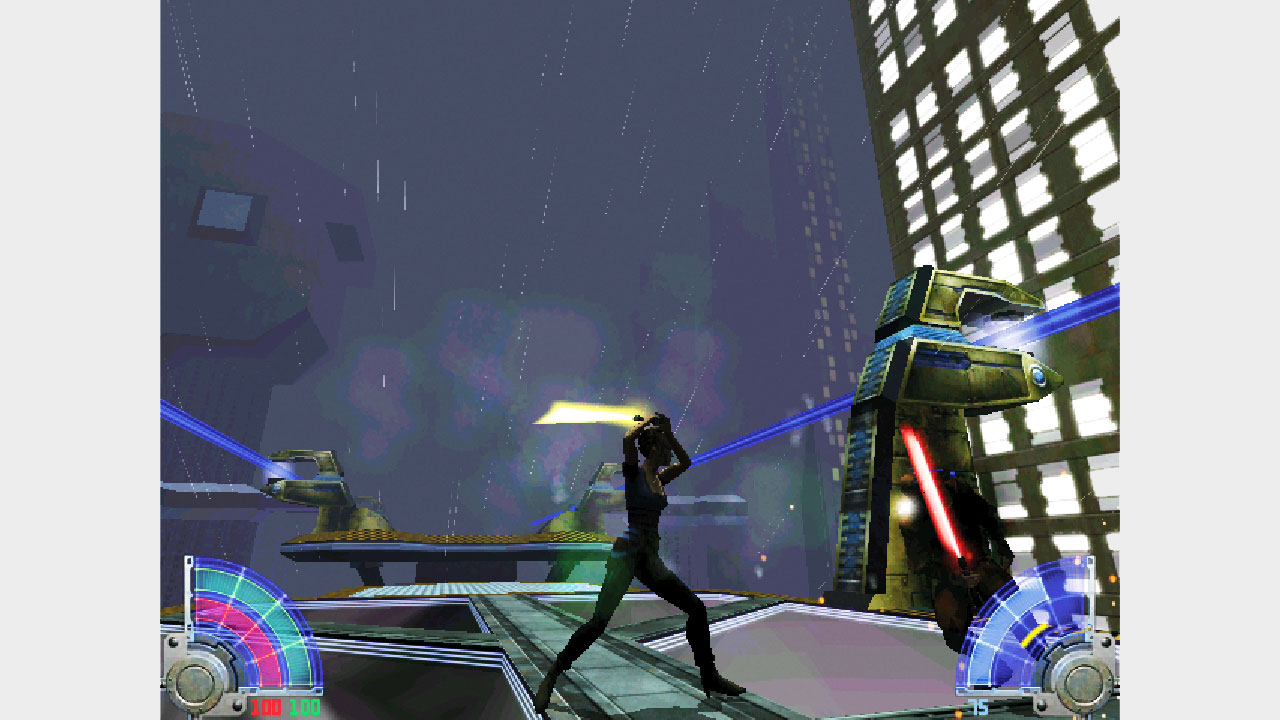
LucasArts was still working on Star Wars properties late in the day, forging ahead with experiences even when the studio seemed to be coming apart at the seams. "I was actually at LucasArts when they were shut down by Disney working on 1313 as the lead level designer," Matthew said, "I think this would have definitely been one of the best Star Wars games in a long time." But it wasn’t to be – that era is over.
Thankfully, the purchase by Disney means new Star Wars games are once again a thing and while some games have been cancelled, there will be more Star Wars games, especially if Star Wars Jedi: Fallen Order proves to be a big success for EA, the current custodians of the Star Wars licence (from a game point of view at least).
So maybe it’s a good thing, then, that the Dark Forces/Jedi Knight series went away. It floated off on a high, never to be brought crashing back down to earth like so many other franchises that were milked within an inch of their life – and we can name quite a few of those. We are unlikely to see a new adventure, but when the older ones still hold up compared to some modern games – even upstaging them in some respects – it's less of a bitter pill to swallow.
This feature first appeared in issue 138 of Retro Gamer magazine. For more long-reads on games you grew up playing, subscribe to Retro Gamer now.
Ian Dransfield is an experienced writer and editor, having contributed to a wide variety of Future Plc publications like 3D Artist, games™, PC Gamer, Retro Gamer, and more. With a career spanning more than a decade, Ian has done everything from work as a freelance consultant for the Guinness World Records to putting in the time as features editor of Raspberry Pi's Wireframe magazine. Ian Dransfield is currently the games editor for Media Foundry.


